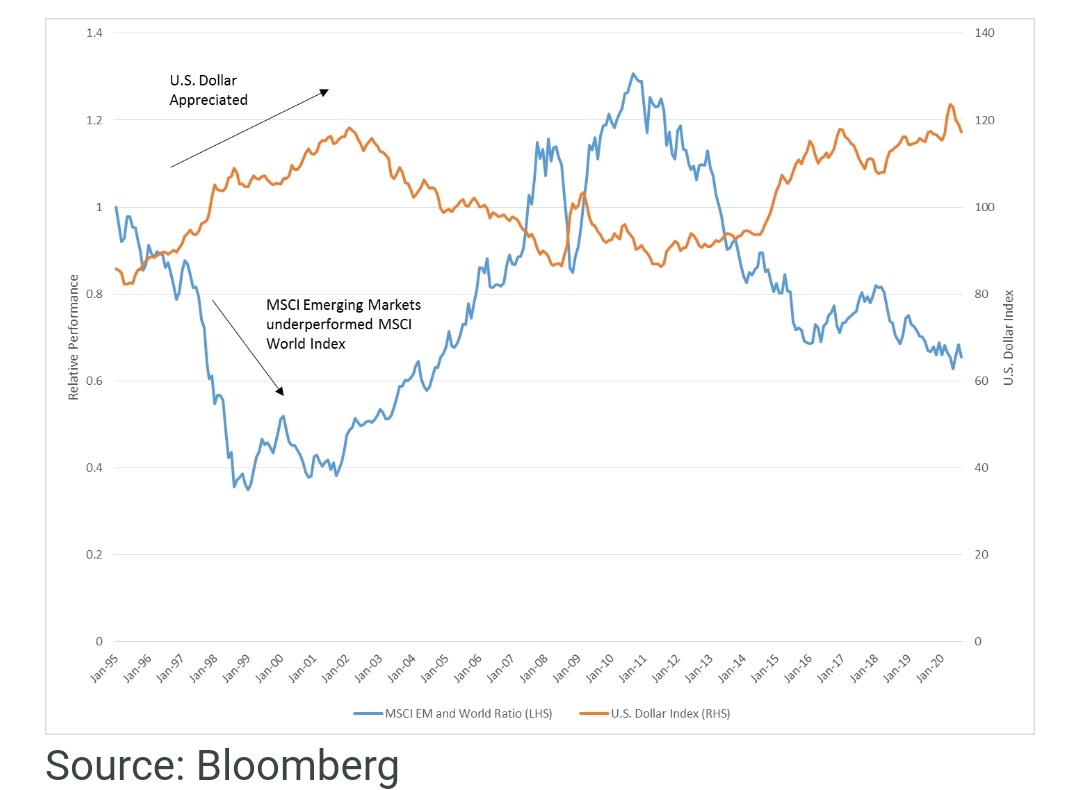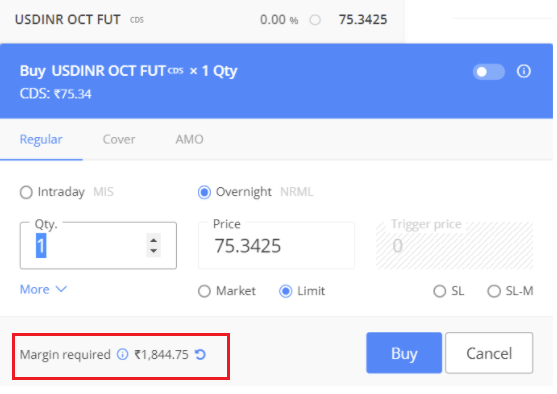2/15
A simple thread to understand relationship between US Dollar and Emerging Markets.
The relationship between the performance of Emerging Market stocks and the US Dollar is one of the tightest macro relationships that exists in investing.
1/15
2/15
When US Dollar weakens, EM index outperform World Index and when US Dollar strengthens EM index underperform World index.
3/15

Then from 2001 to 2010, the U.S. dollar depreciated over 18% while the MSCI EM Index outperformed the MSCI World Index by 14% annualised.
4/15
Overall, from 1995 to 2020, this relationship has a correlation of -0.35.
5/15
A weaker dollar allows Emerging Market countries more freedom to provide fiscal stimulus without fearing negative implications for their own economies.
6/15
As case with India, government will be more comfortable to push fiscal stimulus now when INR is stable.
7/15
Emerging markets are a natural choice as they tend to benefit from weakening dollar and grow faster than DMs.
8/15
9/15
10/15
Easy monetary policy weakens the dollar and leads to its depreciation. Since U.S. dollar is a fiat currency, meaning that it is not backed by gold, it can be created anytime easily.
11/15
12/15
13/15
14/15
Since US Fed has expanded its Balance Sheet at record speed, US Dollar may go through a weak patch.
Taking cue from multiple cycles in the past, if US Dollar continues to weaken, Emerging Market stocks may outperform.
Watch this trend closely!
15/15 End
Edelweiss Emerging Market Opportunities Equity Offshore Fund
https://t.co/ea0nbUxAmF
Edelweiss Greater China Equity Offshore Fund
https://t.co/AXEWzfKdhY
More from Finance
You May Also Like
@franciscodeasis https://t.co/OuQaBRFPu7
Unfortunately the "This work includes the identification of viral sequences in bat samples, and has resulted in the isolation of three bat SARS-related coronaviruses that are now used as reagents to test therapeutics and vaccines." were BEFORE the

chimeric infectious clone grants were there.https://t.co/DAArwFkz6v is in 2017, Rs4231.
https://t.co/UgXygDjYbW is in 2016, RsSHC014 and RsWIV16.
https://t.co/krO69CsJ94 is in 2013, RsWIV1. notice that this is before the beginning of the project
starting in 2016. Also remember that they told about only 3 isolates/live viruses. RsSHC014 is a live infectious clone that is just as alive as those other "Isolates".
P.D. somehow is able to use funds that he have yet recieved yet, and send results and sequences from late 2019 back in time into 2015,2013 and 2016!
https://t.co/4wC7k1Lh54 Ref 3: Why ALL your pangolin samples were PCR negative? to avoid deep sequencing and accidentally reveal Paguma Larvata and Oryctolagus Cuniculus?
Unfortunately the "This work includes the identification of viral sequences in bat samples, and has resulted in the isolation of three bat SARS-related coronaviruses that are now used as reagents to test therapeutics and vaccines." were BEFORE the

chimeric infectious clone grants were there.https://t.co/DAArwFkz6v is in 2017, Rs4231.
https://t.co/UgXygDjYbW is in 2016, RsSHC014 and RsWIV16.
https://t.co/krO69CsJ94 is in 2013, RsWIV1. notice that this is before the beginning of the project
starting in 2016. Also remember that they told about only 3 isolates/live viruses. RsSHC014 is a live infectious clone that is just as alive as those other "Isolates".
P.D. somehow is able to use funds that he have yet recieved yet, and send results and sequences from late 2019 back in time into 2015,2013 and 2016!
https://t.co/4wC7k1Lh54 Ref 3: Why ALL your pangolin samples were PCR negative? to avoid deep sequencing and accidentally reveal Paguma Larvata and Oryctolagus Cuniculus?

























